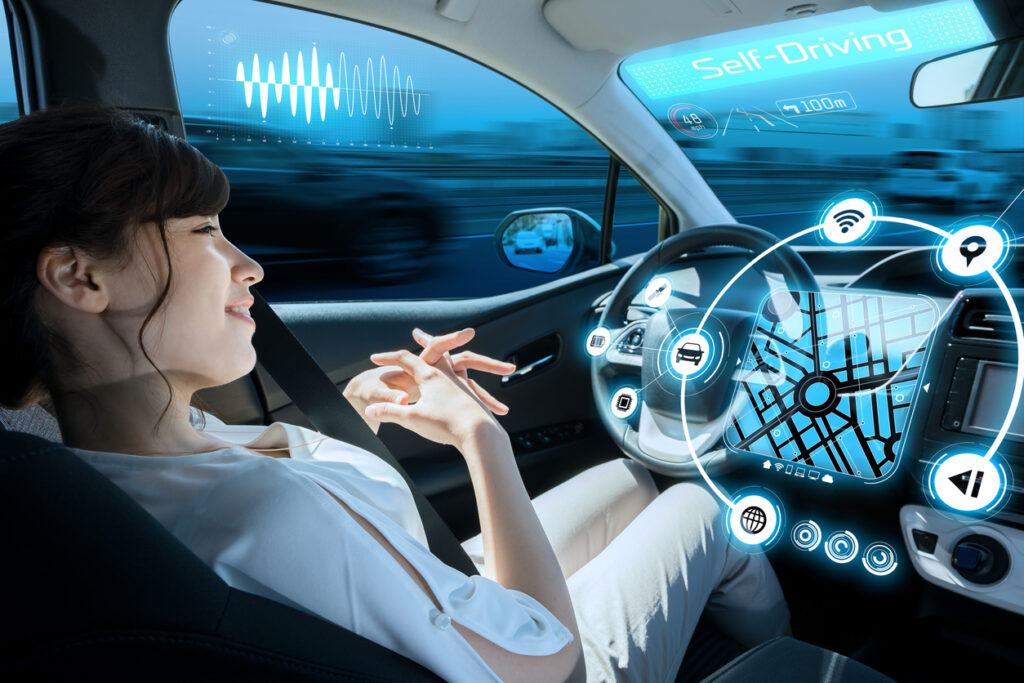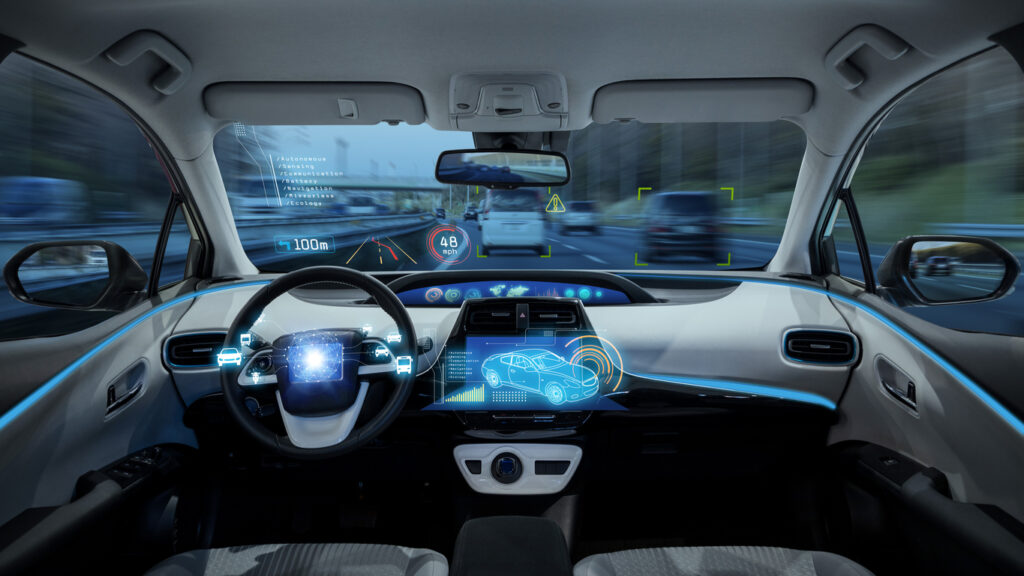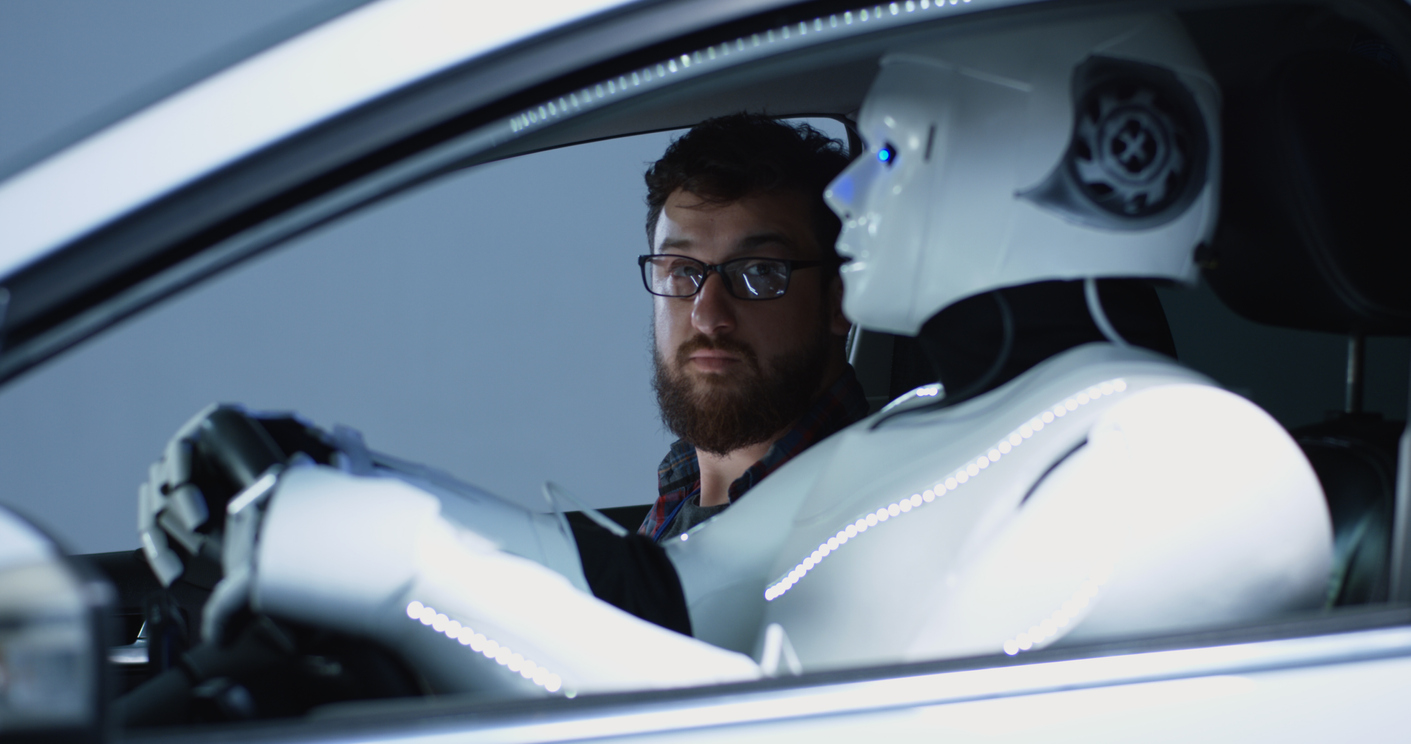Move over humans, you’re about to get booted from behind that wheel. Self-driving cars are coming whether we’re ready for them or not – and they’re rewriting the rules of road travel.
The development of robots and artificial intelligence in recent years has opened up a universe of possibilities that were previously only possible in science fiction. One area where these technological innovations have the potential to revolutionise our daily lives is transportation, particularly in the field of autonomous driving. The prospect of robotic self-driving technology taking the wheel may seem futuristic, but with each passing day, it becomes increasingly clear that they have the potential to outperform human drivers in numerous ways.
The reality is – when we fully develop the technology – predictable, intelligent machines will be better and safer drivers than us hands down. Here’s why.
They’ll have superior vision

Self-driving cars can see up to 250 metres at night, compared with about 76 metres for humans.
Scenario: You’re driving in the city after dark, the roads are busy and pedestrians are everywhere. As you’re about to take a turn, a motorcyclist is in your blind spot. Do you see them?
Self-driving technology: Self-driving cars use cameras, sensors and LiDAR to ‘see’ the world around them. Tesla prefers the former, while companies such as Google’s Waymo and Uber are investing in the latter. LiDAR works by firing out millions of beams of light per second, measuring bounce-back to create accurate 3D maps. Using the data collected, the car’s smart computer system is able to identify objects, predict behaviour and react.
Why it will be better: While humans are pretty good at seeing and processing what’s around them when driving, their line of sight is still limited. As well as 360-degree vision, self-driving cars can see up to 250 metres at night – compared with 76 metres for humans – have distance awareness to +-2cm and thanks to HD maps will even be able to detect its location in the world to ‘understand’ the road data and its surroundings.
They’ll stop in time
Scenario: You’re driving along a motorway when suddenly, and without warning, a car stops in front of you. Will you be able to hit the brake fast enough to avoid a hit?
Self-driving technology: Without a human behind the wheel, self-driving cars will use Automatic Emergency Braking (AEB) – a feature already used in cars today. Essentially, If the vehicle is moving at a speed greater than 30 km/h (18 mph) and the automated emergency braking senses that the distance to the vehicle in front of it or stationary is getting critically close, it prepares the braking system for possible emergency braking. The technology alerts the driver via an auditory and/or visual indication, then the brakes are applied automatically if they do not respond to the hazardous situation.
Why it will be better: Humans can certainly slam on those brakes when they have to – we’ve all had those adrenaline-pumping near-misses. However, even those of us with superfast reflexes can’t quite match the might of the machine. In fact, according to Wired, it takes us mortals 1.6 seconds to halt a car on a dry road while a self-driving car can do it in a mere 0.5 seconds.
They’ll always obey the rules

Scenario: You’re tired after a long day at work, you’ve had an argument with your boss and you’ve got a 50-minute journey ahead of you. Are you driving as well as you should be?
Self-driving technology: The rules of the road are programmed into an automated car’s central computer. This includes speed limits, the exact distance they must stay away from the back of the vehicle in front, and etiquette for roundabouts. AI technologies power the autonomous car system. With image recognition, sensors, machine learning, neural networks and AI-assisted computer systems they can interpret traffic signs, traffic lights and lane markings and then act accordingly.
Why it will be better: Nearly 1.35 million people end up dying in road accidents according to WHO. As good as we like to think we are at driving, the reality is humans struggle to be consistent when it comes to following the rules. We get tired and veer across lanes. We get angry and drive too fast. We get distracted and fail to stop at pedestrian crossings. Robots don’t. They maintain the speed limit, accurately follow the curve of the road and never run a red.
They’ll know what’s ahead
Scenario: There’s been a major accident ahead. It’s blocking lanes, and traffic is starting to build up behind it. Are you aware of it and do you have time to change your route?
Self-driving technology: Enabled by lightning-fast 5G, cameras, AI and 3D HD mapping, Vehicle-to-Everything (V2X) communication allows cars to share information with each other, their drivers and their surroundings. Using chip technology, self-driving cars will receive data from each other (V2V) as well as infrastructure (V2I) such as traffic lights, road signs and pedestrian devices to stay one step ahead.
Why it will be better: Other than checking the local travel news, humans are generally blind to what’s happening on the road ahead. They can’t typically see accidents, roadworks or icy patches on the road until it’s too late. If they do want to see what’s on the road, often they have to rely on devices and maps, but some notify only about speed cameras ahead. By comparison, automated vehicles will be aware of all these things in real time and will be able to divert their course to avoid problems or delays.
They’ll make the right choice
Scenario: You’re driving along a busy two-way road when a deer suddenly runs out in front of you. Do you swerve to miss them even though you may hit other cars or people?
Self-driving technology: With human-like moral decision-making algorithms programmed into their intelligent computer systems, automated cars should be able to make ethical decisions in a life or death situation. Google thinks that if engineers programme self-driving cars to learn from and weigh the worth of real-world events, they will be able to make moral judgements. Have a look at the video below for a demonstration of Google’s Waymo self-driving car.
However, the rules might vary depending on the country. As per Towards data science, for instance, Germany made the decision that autonomous vehicles should never intentionally increase the risk of human death and shouldn’t treat people differently depending on their gender, age, or any other characteristic. Additionally, the value of human lives should always take precedence over that of property or animals. It means that in this scenario, they could take the risk of hitting the deer to save humans.
Why it will be better: Humans often have to make split-second moral choices on the road, which may lead to them acting erratically, saving themselves over others, or injuring more people. Self-driving cars, on the other hand, will behave consistently based on the set of principles a society agrees on, whether that means always making the utilitarian choice or prioritising eco-efficiency over performance.
There are many concerns whether self-driving cars will make ethical decisions, but considering such a high number of accidents caused by human drivers (and even 99% of autonomous vehicle accidents were caused by human error) maybe we should give a chance to AI? With their outperforming human vision, sharp reactions, unwavering rule adherence and ability to know what’s ahead and to consider ethics, robots will not only be better drivers – they’ll also make the roads a safer, fairer place.











